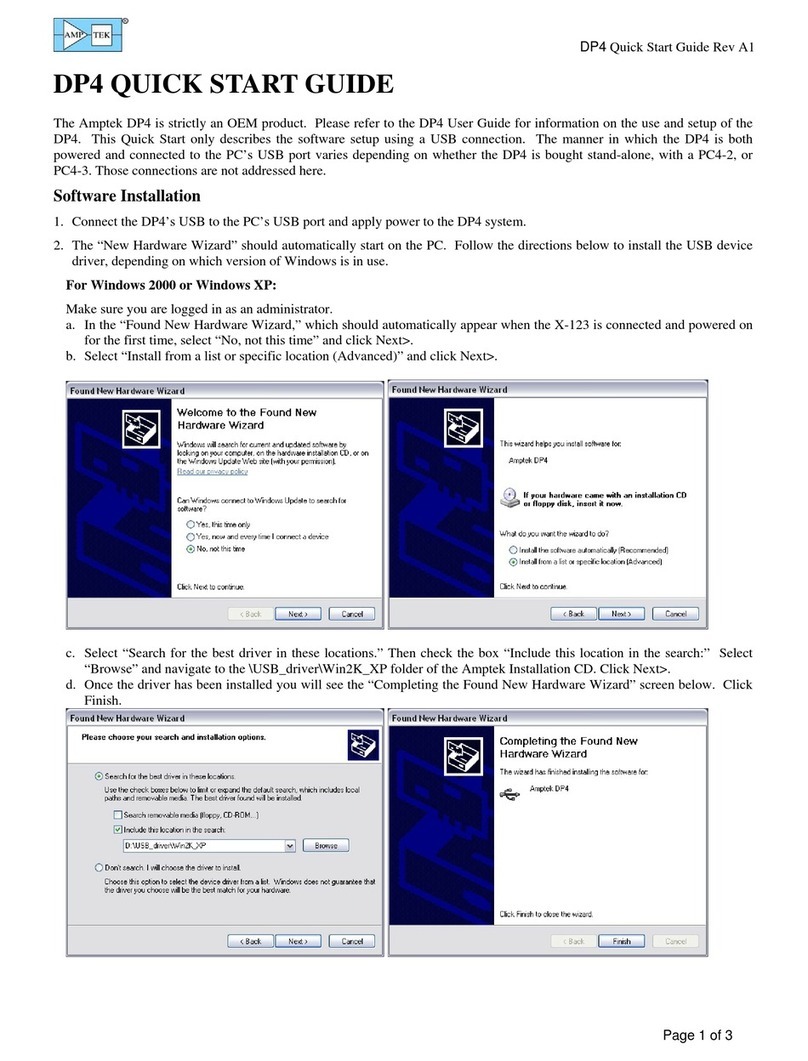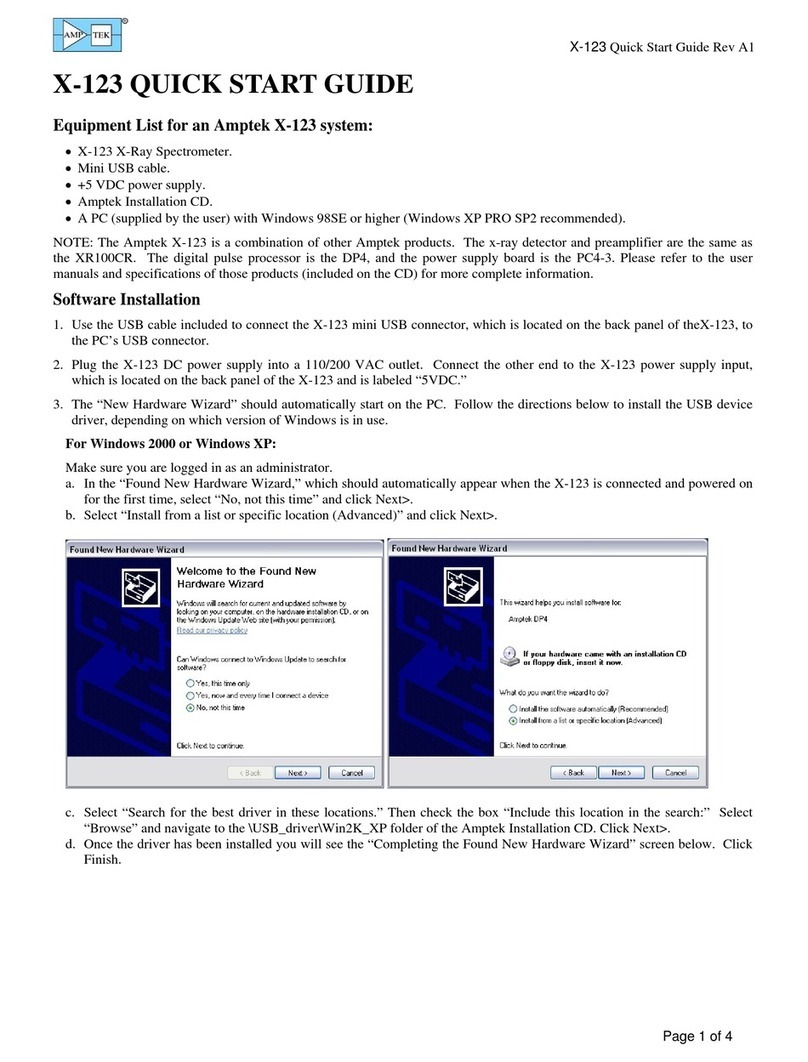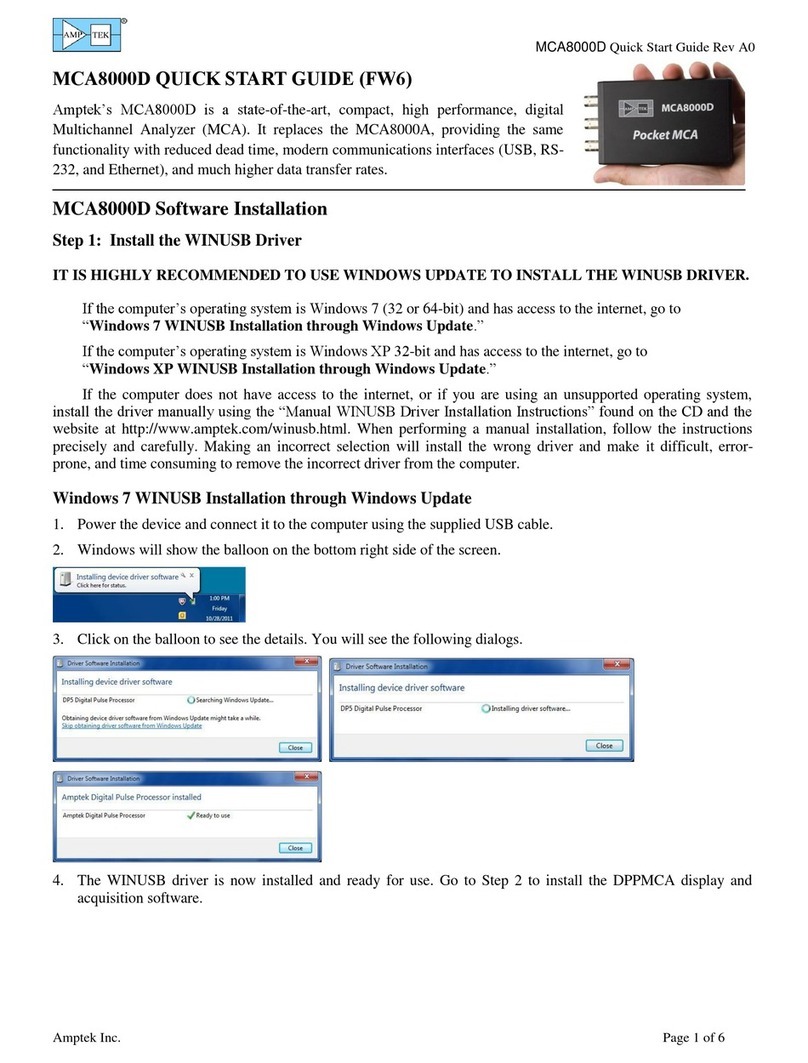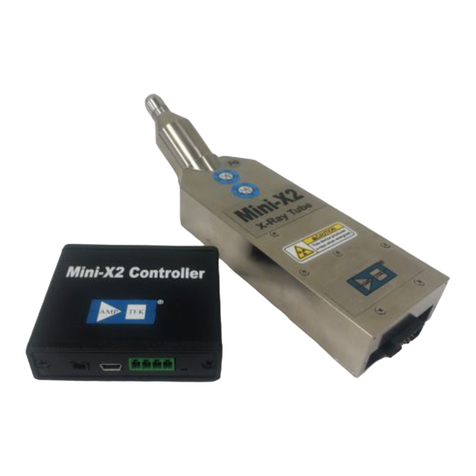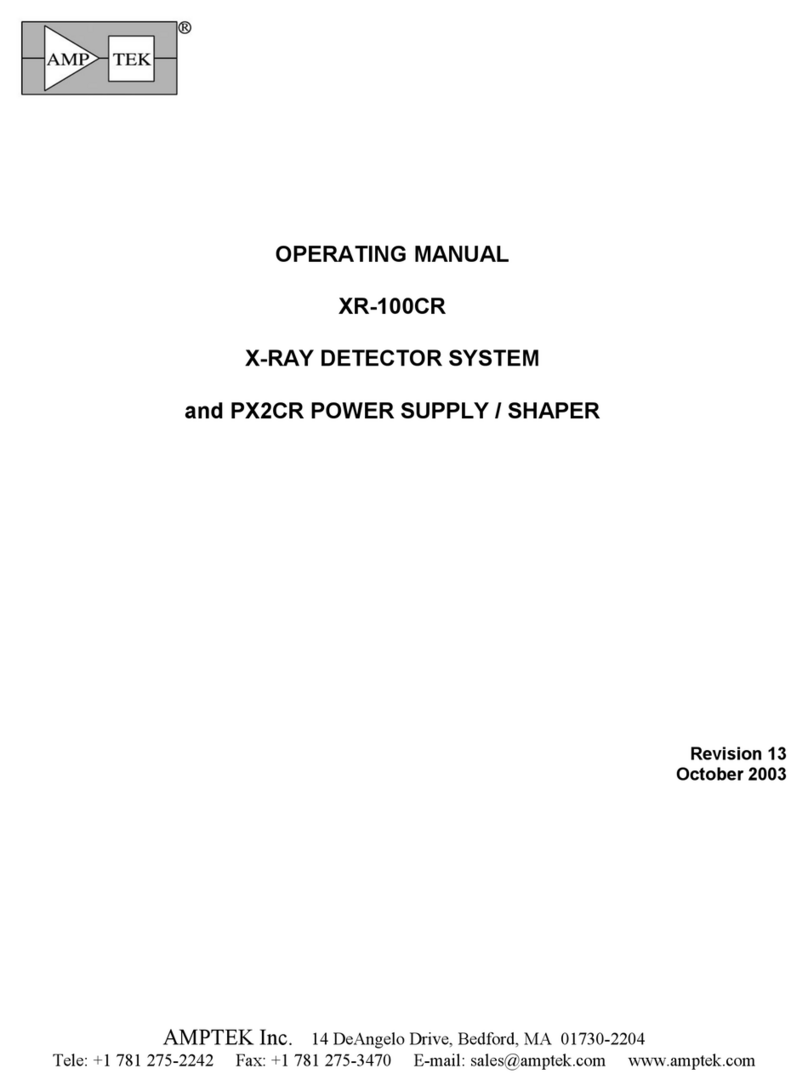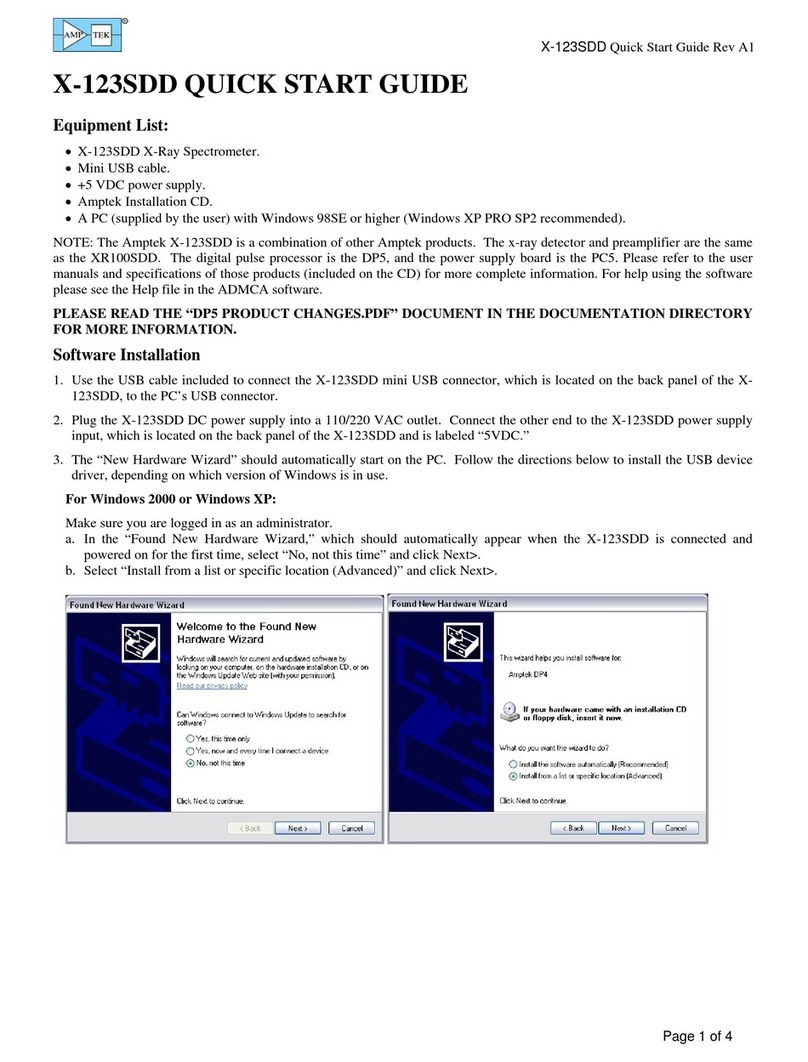X-123 User Manual
2
1Introduction
1.1 X-123 Description
The X-123 combines, in a single package, Amptek’s high performance X-ray spectroscopy components:
(1) an X-ray detector (options include the FastSDD, SDD, SiPIN, or CdTe) and preamplifier, (2) the DP5 digital
pulse processor and MCA, and (3) the PC5 power supply. The result is a complete system which can fit in your
hand with no performance compromise. It requires only +5 VDC power and a standard communication
interface. With the X-123, anyone can rapidly obtain high quality X-ray spectra.
The detector is mounted on a thermoelectric cooler along with the input FET and coupled to a custom
charge sensitive preamplifier. The thermoelectric cooler reduces the electronic noise in the detector and
preamplifier, but the cooling is transparent to the user: it operates like a room temperature system.
The pulse processor is the DP5, a second generation digital pulse processor (DPP) which replaces both
the shaping amplifier and MCA found in analog systems. The digital technology improves several key
parameters: (1) better performance, specifically better resolution and higher count rates; (2) greater
flexibility since more configuration options are available, selected by software, and (3) improved stability and
reproducibility. The DPP digitizes the preamplifier output, applies real-time digital processing to the signal,
detects the peak amplitude, and bins this in its histogram memory. The spectrum is then transmitted to the
user’s computer. The PC5 supplies the power to the detector, including low voltages for the preamps, high
voltage to bias the detector, and a supply for the thermoelectric cooler which provides closed loop control
with a maximum temperature differential of 85 °C. All of these are under software control. The X-123SDD
input is unregulated +5 VDC with a current of about 400-900 mA, depending on configuration.
The complete system is packaged in 7 x 10 x 2.5 cm3aluminum box. The detector is mounted on an
extender; with lengths from 3/8” to 9” (vacuum flanges are available). In its standard configuration, only two
connections are required: power (+5 VDC) and communications (USB, RS232, or Ethernet). An auxiliary
connector provides several additional inputs and outputs, used if the X-123 will be integrated with other
equipment. This includes an MCA gate, timing outputs, and eight SCA outputs. The X-123SDD is supplied with
data acquisition and control software. It also includes a Software Development Kit (SDK), to integrate the
unit with custom software. Optional accessories include software for analyzing X-ray spectra, several
collimation and mounting options, and X-ray tubes to complete a compact system for X-ray fluorescence.
Photograph of complete X-123 (left) and a typical 55Fe spectrum (right).












